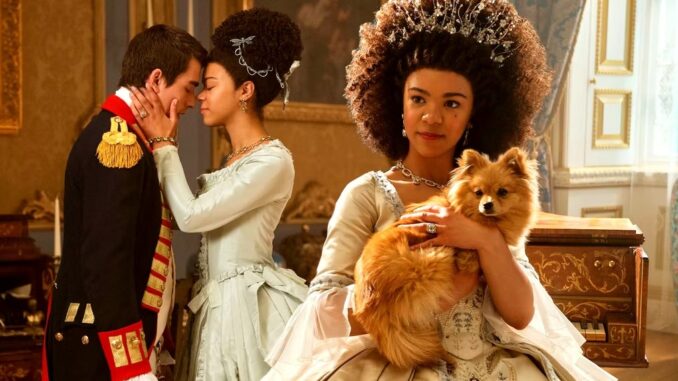
Queen Charlotte True Story: 10 Things Bridgerton’s Prequel Changed
Queen Charlotte gets many details about the real monarch’s life correct, but being a Bridgerton spinoff means it needed to change some facts.
The Bridgerton spinoff Queen Charlotte manages to get many details about the titular queen’s real-life correct, but the Netflix series still changes several aspects of the true story. Queen Charlotte is a unique entry for Bridgerton because while Bridgerton is based on Julia Quinn’s romance novels, its spinoff takes its inspiration from real historical figures, with a spotlight on the titular character, Queen Charlotte.
10. Queen Charlotte Came To England Almost 20 Years Earlier
Netflix’s Bridgerton is known for its Regency-era setting, but to make Queen Charlotte’s timeline match, the Bridgerton spinoff changes when Queen Charlotte arrives in England. Many of the details surrounding Queen Charlotte’s swift marriage to King George III are correct in the Netflix show.
9. Queen Charlotte Didn’t Speak English When She First Came To England
In Queen Charlotte, the titular character and her future husband King George appear to hit it off soon after their initial meeting, but in real life, the two would have had to contend with a language barrier. Although the Bridgerton spinoff doesn’t go into depth with Queen Charlotte’s origins, she hails from a small duchy in northern Germany called Mecklenburg-Strelitz and has a meager education.
8. The Great Experiment Is Entirely Fictional
Bridgerton depicts an alternate universe in which England’s upper class is far more diverse, and Queen Charlotte shows the origin of this society through a fictional “Great Experiment.” In Queen Charlotte, The Great Experiment is intended to unite all races to create a better, stronger England, leading several minoritized families (such as Lord and Lady Danbury) to receive peerages, thus elevating their societal status.
7. Queen Charlotte’s Race Is Different In Real Life
In both Bridgerton and Queen Charlotte, the titular queen is depicted as being biracial, but the queen of England’s race was possibly different in real life. Despite Queen Charlotte’s portrayal, scholarship remains divided on whether Queen Charlotte might have been Black to this day. Regardless of the truth behind the discourse surrounding Queen Charlotte’s race.

6. Charlotte’s Brother Did Get His Lady
At the end of Queen Charlotte, the titular character’s brother proposes to and is rejected by Lady Danbury, but in real life, his track record with women was a little different. Queen Charlotte only romantically depicts the Bridgerton character’s brother Adolphus, but Adolphus’ pursuits are more akin to those of the real Queen Charlotte’s other brother, Ernest, who did marry his girl (sort of).
5. King George’s Mental Illness Followed A Different Timeline In Real Life
A huge plot point in Queen Charlotte surrounds King George III’s mental health issues. While the real King George suffered from similar episodes as his character does on the show, his illness followed a slightly different timeline. Bridgerton and Queen Charlotte’s depiction of King George’s sad decline in health towards the end of his life is relatively accurate to real life.
4. Some Of Queen Charlotte’s Children Were Actually Good
The Bridgerton spinoff Queen Charlotte depicts Charlotte and George’s 13 surviving children as being rather petulant and difficult adults, but in real life, this isn’t entirely the case. Although some aspects of Queen Charlotte’s portrayal of her and King George’s children are accurate, like their tendency towards siring illegitimate children.
3. Queen Charlotte Was More Affectionate To Her Family
In both Queen Charlotte and Bridgerton, Queen Charlotte’s personality is incredibly pragmatic and can sometimes border on cold, but she had a softer attitude toward her family in real life. The Bridgerton spinoff depicts Queen Charlotte’s reaction to her granddaughter’s death as being one purely of concern for the future of the Crown.
2. King George Was Cared For By At Least 1 Doting Daughter
Both Bridgerton and its spinoff Queen Charlotte depict King George as living in isolation towards the end of his life, but in reality, he was still cared for by some of his family. Princess Mary, who was the 11th child of Queen Charlotte and King George, remained living in the palace through adulthood, and she personally looked after both her sister, Princess Amelia, and her father during their times of illness.
1. King George Hallucinated Visions of His Dead Children
Two of King George and Queen Charlotte’s 15 children didn’t survive to adulthood, and their deaths greatly affected King George’s mental deterioration towards the end of his life. In the Queen Charlotte show, the focus of King George’s manic episodes seems to center around the planets and Venus particularly, though, in real life, the monarch sometimes hallucinated visions of his dead children, Prince Octavius and Prince Alfred.
